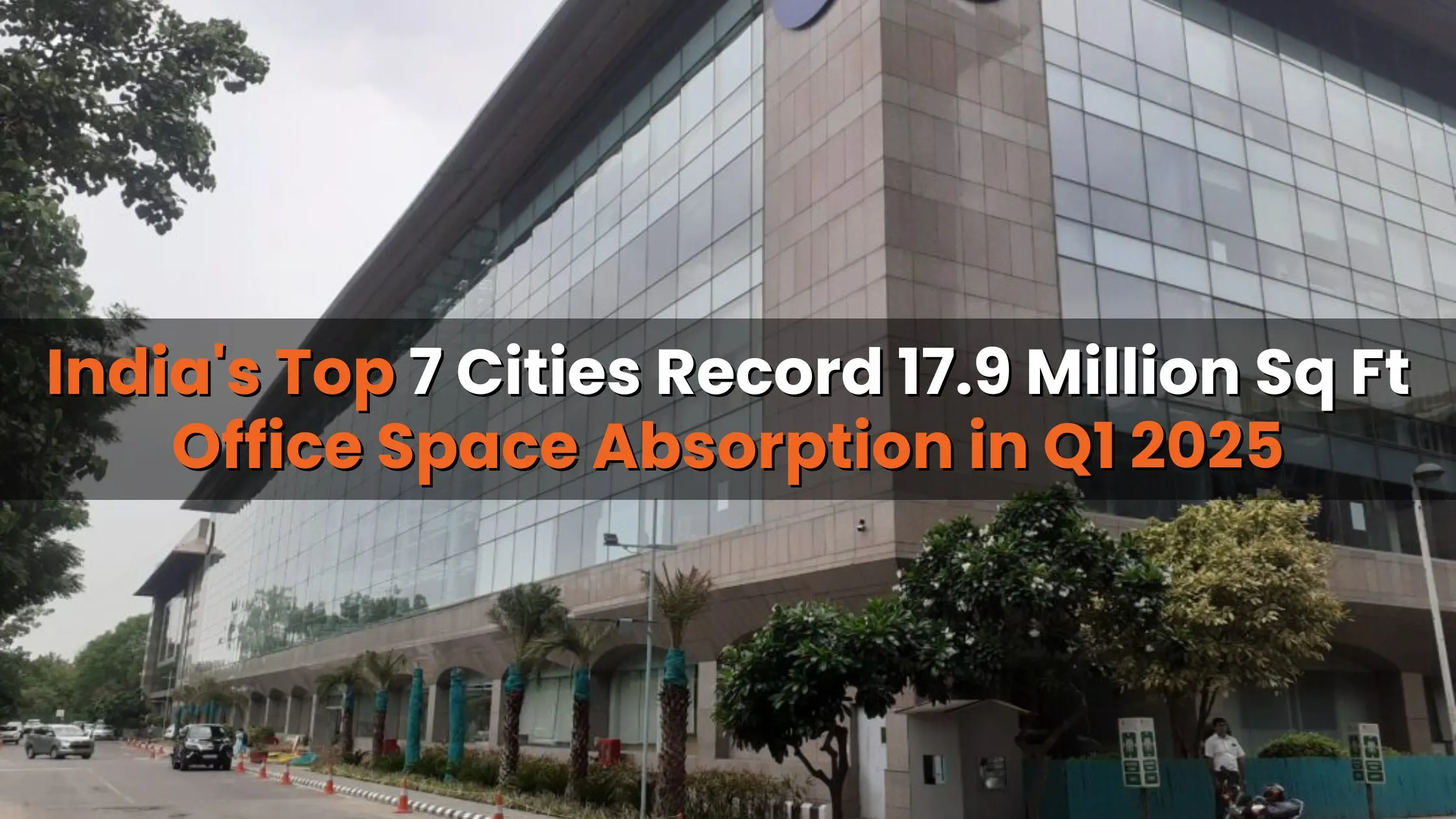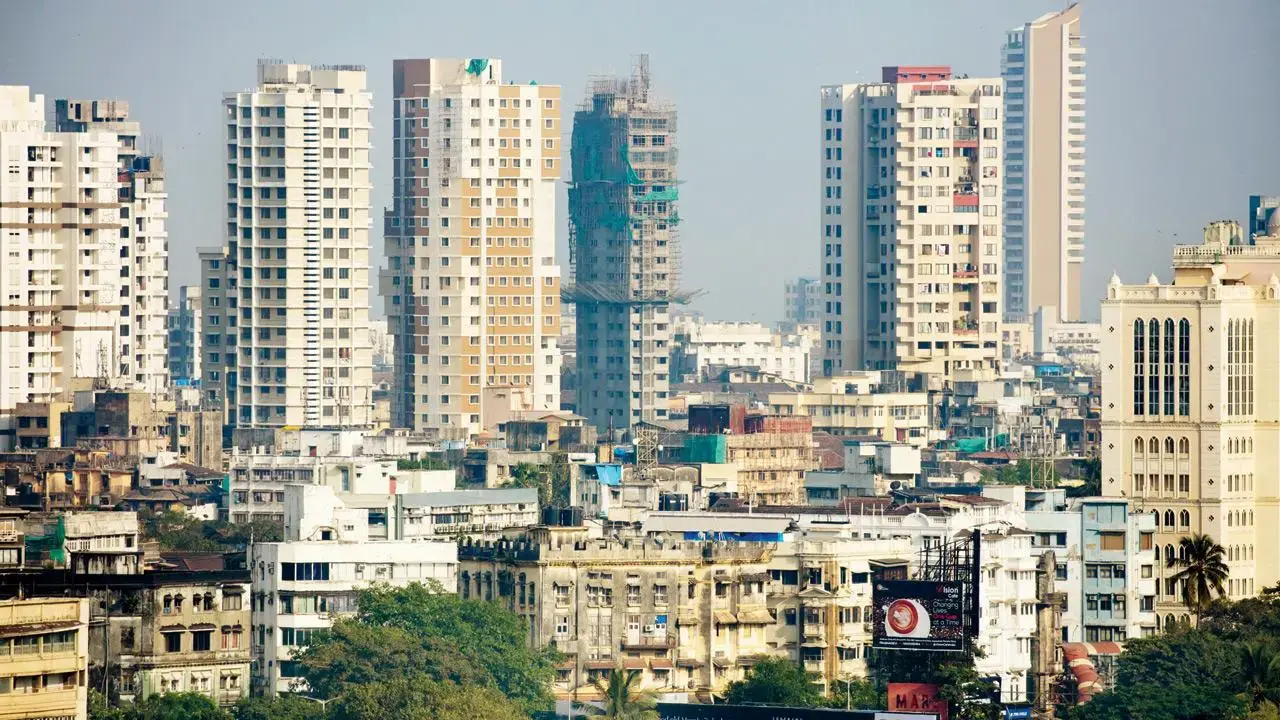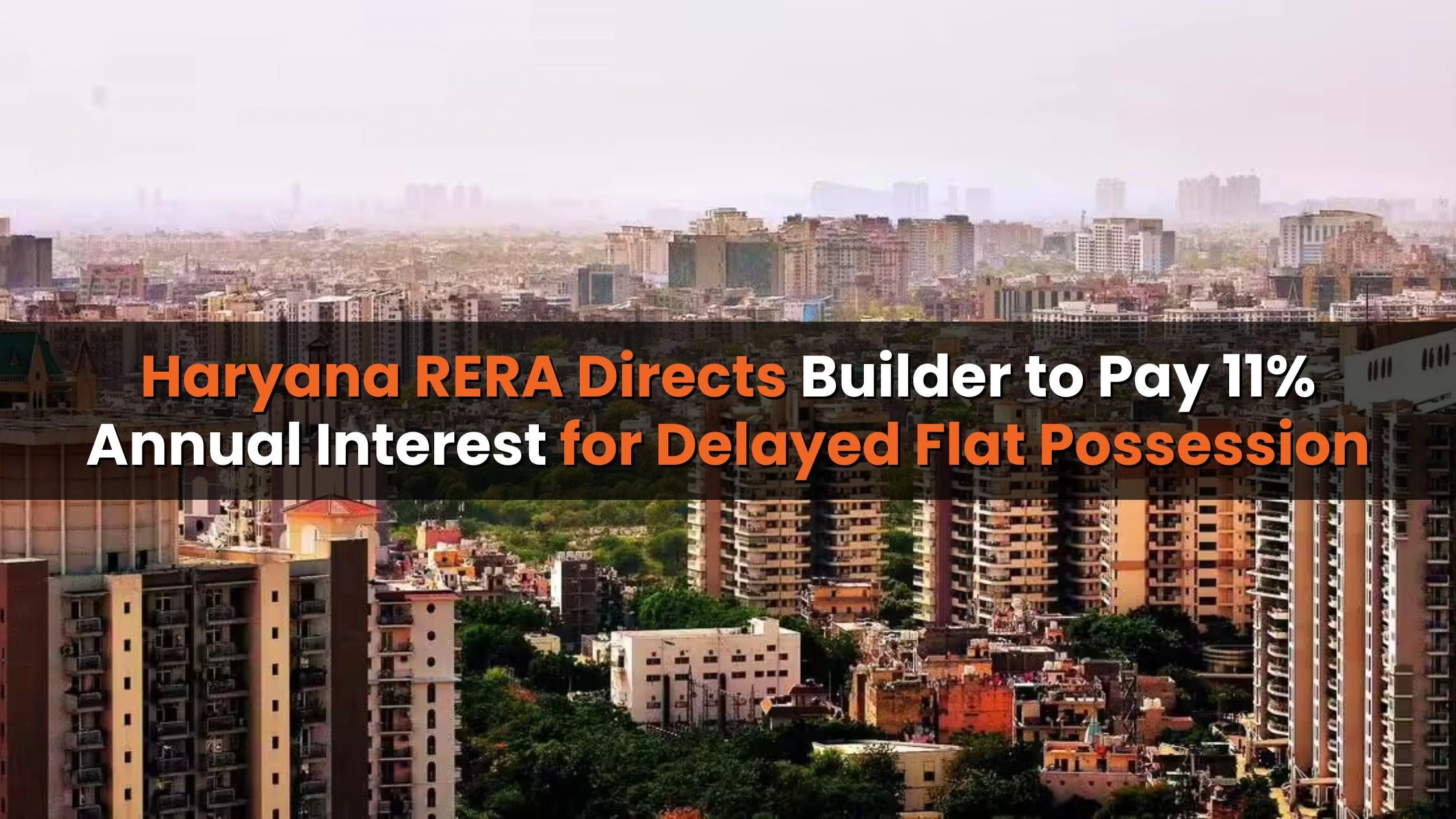Table of Content
An office space absorption of 17.9 million sq ft in Q1 2025, a 34% year-on-year increase, across the top seven cities of India, according to the latest report by Vestian. The top performer, Bengaluru, absorbed 4.08 million sq ft of office space, a 56% year-on-year increase, followed by Mumbai, which absorbed 3.99 million sq ft of office space, showcasing the growth in office space demand across India's urban areas.
Bengaluru Leads the Pack
The city of Bengaluru secured its lead in office space absorption by GCC in Q1 2025, with Bengaluru contributing 39% of GCC-driven absorption in the top 7 cities, with 39% QoQ growth and 119% YoY growth. Such transitions and developments indicate the city remains a leader in technology and multinational corporations in India.
Also Read: Top Nine Cities Witness Surge in Home Deliveries to Over 4 Lakh Units, Delhi-NCR Faces a Dip
Performance of Other Cities
- Mumbai: Mumbai recorded 3.99 million sq ft of office space absorption, making it the second-largest contributor. Despite an 11% decline in value terms, Mumbai's share in pan-India absorption rose by one percentage point to 22%.
- Pune: Pune demonstrated exceptional growth, increasing office space absorption by 276% YoY. Its pan-India share rose from 5% in Q1 2024 to 15% in Q1 2025, highlighting its emerging role in the office real estate sector.
- Kolkata: Kolkata saw the lowest absorption at 0.23 million sq ft. However, the city recorded a 44% YoY increase, indicating steady progress in office space demand.
- Chennai: Chennai experienced the steepest decline, with a 52% YoY drop in office space absorption. Its share fell from 25% to 9%, reflecting challenges in the local market.
- NCR: New completions in the National Capital Region (NCR) doubled to 2.6 million sq ft compared to last year, showcasing its potential for future growth.
- Hyderabad: Hyderabad faced the highest office space vacancy among the seven cities, with 28 million sq ft of vacant space as of Q1 2025. Despite this, the city's robust demand is expected to drive absorption in the upcoming quarters.
Decline in Construction Activities
Construction activity across the country has diminished significantly, with a quarterly decline of 39% and a yearly decline of 12%. The absence of new supply additions in Hyderabad and marginal supply additions in Chennai, Mumbai and Kolkata late in their respective quarters had more of an impact than any sharp decline in activity from the quarter. Bengaluru led the way in new completions with a 37% (3.5 million sq ft) share of overall new completions, followed by Pune with a 31% (2.9 million sq ft) share.
Market Trends and Future Outlook
The report highlighted notable trends shaping the office real estate sector:
- Increased Demand for Flex Spaces: Demand for office spaces by GCCs, IT-ITeS, BFSI, and Flex Spaces grew, signalling strong investor and corporate interest.
- Steady Growth in Emerging Cities: Cities like Pune and Kolkata have shown remarkable growth, while traditional leaders like Bengaluru and Mumbai retain dominance.
- Rising Vacancy Rates in Hyderabad: Despite a significant supply pipeline, Hyderabad's high vacancy rate remains a concern, requiring strategic interventions.
Also Read: MahaRERA's Enhanced Project Portal Ready for Launch on May 5
Insights from Experts
Shrinivas Rao, FRICS, CEO of Vestian, said, "India's office market had a strong start to Q1 2025. Demand remained steady across all major office markets in the country, keeping the growth momentum. While absorption decreased from the last quarter, we see a swell in demand in the upcoming quarter, as helped by GCCs, IT-ITeS, BFSI, and Flex Spaces."
Conclusion
In Q1 2025, the office space absorption performance of the top seven cities reflects the resilience and dynamism of India's real estate sector. Bengaluru and Mumbai continue to lead the charge, but cities emerging on the radar, such as Pune, are growing. As new supply comes into the market, driven by increased demand and positive sentiment for office spaces, healthy growth will continue through the upcoming quarters. The future for stakeholders will be about getting used to continually evolving market dynamics and taking advantage of opportunities in emerging markets.
Follow AquireAcers Whatsapp Channel to Stay Updated With The Latest Real Estate News





_1764657403.webp)


Ans 1. A total of 17.9 million sq ft of office space was absorbed, marking a 34% year-on-year increase.
Ans 2. Bengaluru led with 4.08 million sq ft of office space absorption, contributing 39% of GCC-driven absorption.
Ans 3. Mumbai absorbed 3.99 million sq ft, becoming the second-largest contributor. Despite an 11% decline in value terms, Mumbai's share in pan-India absorption rose to 22%.
Ans 4. Pune demonstrated exceptional growth with a 276% year-on-year increase, raising its pan-India share from 5% in Q1 2024 to 15% in Q1 2025.
Ans 5. Kolkata had the lowest absorption at 0.23 million sq ft but saw a 44% year-on-year increase, indicating steady progress.
Ans 6. Hyderabad had 28 million sq ft of vacant office space as of Q1 2025. Despite a significant supply pipeline, high vacancy rates remain a concern due to market saturation and strategic challenges.
Ans 7. Construction activities declined by 39% quarter-on-quarter and 12% year-on-year due to a lack of new supply in cities like Hyderabad and limited additions in Chennai, Mumbai, and Kolkata.
Ans 8. Bengaluru led in new completions, contributing 37% (3.5 million sq ft) of the total new supply in Q1 2025.